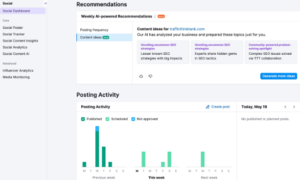In today’s digitally-driven world, data is the lifeblood of enterprises. Ensuring its availability and security is paramount, especially when unforeseen disasters or disruptions occur. This is where Disaster Recovery as a Service (DRaaS) comes into play. DRaaS is a proactive approach to safeguarding data and applications, allowing businesses to recover swiftly and minimize downtime during critical events. While DRaaS is essential for businesses of all sizes, this article focuses on scaling up your DRaaS strategy for enterprise-level resilience.
Introduction
The Evolution of DRaaS
Disaster recovery has come a long way from traditional backup methods like tape drives and offsite storage. With the advent of cloud computing and virtualization, DRaaS has become a game-changer for businesses looking to protect their critical assets. Let’s explore the key components of scaling up your DRaaS strategy for enterprise resilience:
Multi-Site Replication
Enterprise-level resilience demands redundancy. A single data center or backup location may not be sufficient. Implementing multi-site replication ensures that your data and applications are duplicated across geographically diverse locations. In the event of a disaster in one region, you can seamlessly switch to another, minimizing downtime and data loss.
Advanced Automation
Automation is a cornerstone of effective DRaaS. As your enterprise grows, manual processes become impractical. Implementing advanced automation allows for quick and efficient failover and failback procedures. This reduces the burden on IT staff and ensures consistency in recovery processes.
Scalable Infrastructure
Enterprise-scale DRaaS requires a scalable infrastructure that can adapt to your evolving needs. The cloud is an ideal platform for scalability, allowing you to adjust resources as required. This flexibility ensures that your DRaaS strategy can accommodate increased workloads and changing data volumes.
Comprehensive Testing
Regular testing is vital to the success of any DRaaS strategy. At the enterprise level, this becomes even more critical. Rigorous testing ensures that all components of your DRaaS solution are functioning correctly and that recovery objectives are met. Comprehensive testing also helps identify and address potential issues before they become critical.
Challenges of Scaling DRaaS for Enterprises
Scaling up your DRaaS strategy for enterprise-level resilience is not without its challenges. Here are some common hurdles you may encounter:
Cost Management
Enterprise-scale DRaaS can be expensive. Managing costs while maintaining high resilience levels is a delicate balance. It’s crucial to assess your specific needs and invest wisely in the right technology and services.
Data Complexity
As your enterprise grows, so does the complexity of your data. Different types of data, from structured to unstructured, need different approaches to backup and recovery. Managing this complexity effectively is essential for a successful DRaaS strategy.
Compliance Requirements
Enterprise-level businesses often have stringent compliance requirements, such as HIPAA or GDPR. Your DRaaS strategy must align with these regulations, ensuring data security and privacy.
Best Practices for Scaling Up DRaaS
To overcome these challenges and successfully scale up your DRaaS strategy for enterprise-level resilience, follow these best practices:
Conduct a Risk Assessment
Start by identifying your organization’s critical assets and potential risks. This assessment will help you prioritize resources and investments in DRaaS.
Develop a Comprehensive DR Plan
Create a detailed disaster recovery plan that outlines roles and responsibilities, recovery objectives, and communication protocols. Ensure that all employees are well-versed in the plan.
Choose the Right Service Provider
Select a reputable DRaaS service provider with a proven track record in supporting enterprise-level clients. Ensure they offer the necessary scalability, automation, and multi-site replication capabilities.
Implement Robust Security Measures
Regularly Test and Update
Continuously test your DRaaS plan and make adjustments as needed. Technology evolves, and your strategy should evolve with it to stay effective.
Educate Your Team
Ensure that your IT team and employees are well-trained in DRaaS processes and procedures. Regular training and drills are essential for a well-prepared organization.
Conclusion
In today’s digital landscape, enterprise-level resilience is a non-negotiable requirement. Scaling up your DRaaS strategy is a proactive approach to safeguarding your business against disasters and disruptions. By embracing multi-site replication, automation, scalable infrastructure, and comprehensive testing, you can overcome the challenges of scaling DRaaS for enterprises. Remember to conduct a risk assessment, develop a comprehensive plan, choose the right service provider, implement robust security measures, and keep your strategy updated through regular testing and education. With these practices in place, your enterprise will be well-prepared to navigate any unexpected challenges that come your way.



































